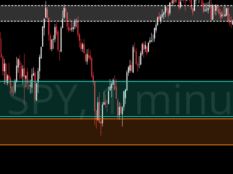Behavioral Finance Part 2
I’m Meta Matt, Director of Education and welcome to PB University LITE! This is a 50 Class Trading 101 Series geared towards both new and veteran traders alike! We go over everything from Trading Psychology, Technical Analysis, and Options Trading to Commodity Trading, Forex, and more!! This 50 Class series is not designed be taken in order, it is instead designed for traders to browse and pick which classes interest them. I will include the list of classes at the bottom of this page.
Start Trading With Webull: Free Stock Shares
Custom Trading Indicator DISCOUNT: Try StocksBuddy Today
Get A Trading Coach, Premium Alerts, Education, and Community:
1 Month Membership
90 Days (Save 10% Per Month)
1 Year (Save $279)
Understanding Prospect Theory: Let's kick things off with a game-changer in Behavioral Economics: Prospect Theory. Developed by Daniel Kahneman and Amos Tversky, this theory flips traditional utility theory on its head. Instead of making decisions based on rational assessments of expected utility, Prospect Theory suggests that we weigh potential gains and losses relative to a reference point. This means that how information is framed can significantly impact our decisions. Take, for example, two investment options with the same potential gain. Option 1 might seem safer because it's framed around a lower reference point, even though the potential outcome is the same.
The Power of Framing: Framing effects are no joke. How information is presented to us can completely alter our perception of risk and influence our decision-making. Whether it's framing an investment in terms of potential gains versus potential losses, the way information is presented matters. So next time you're analyzing a trade alert, pay attention to the framing of the wording—it could be influencing your decisions more than you realize.
Beware of Herding Behavior: Herding behavior is like following the crowd blindly. It's when individuals mimic the actions or decisions of a larger group without conducting their own analysis. We're all about education here at Pennybois because it's crucial to learn how to make your own trades instead of just following the leader. Herding behavior can create market trends and even lead to bubbles, so it's essential to stay informed and independent.
The Impact on Market Trends and Bubbles: Herding behavior isn't just a theoretical concept—it has real-world consequences. When a significant number of investors jump on a trend, it can create a self-fulfilling prophecy, driving prices higher and higher until the bubble bursts. We've seen it happen with the dot-com bubble, Crypto, and NFTs. Understanding herding behavior can help you navigate market trends more effectively and avoid getting caught up in speculative frenzies.
Avoiding Overtrading and Regret Aversion: Overtrading is like emotional trading on steroids. It's when traders make excessive and frequent trades driven by emotions like anxiety, excitement, or boredom. Not only can overtrading lead to higher transaction costs and increased exposure to market volatility, but it can also cloud your judgment and lead to significant losses. Regret aversion, on the other hand, is the fear of making the wrong decision. It can cause traders to avoid taking risks, even when it might be the right move. Don't let fear hold you back from seizing opportunities.
The Anchoring Effect: Anchoring is another cognitive bias that can trip us up. It's when we rely too heavily on the first piece of information we encounter when making decisions. This can lead to biased assessments of value and cause us to overvalue or undervalue assets or investments. Remember, first impressions matter, but they shouldn't dictate your entire trading strategy.
Applying Behavioral Finance to Investing: Understanding behavioral biases is crucial for making informed investment decisions. Whether it's confirmation bias leading investors to overlook critical evidence or overconfidence bias causing them to underestimate risks, being aware of these biases can help you create more resilient investment strategies. Value investing and contrarian strategies are just a couple of examples of how you can leverage insights from Behavioral Finance to your advantage.
Real-World Case Studies: Let's bring it all together with some real-world examples. From the dot-com bubble to the aftermath of the 2008 financial crisis, Behavioral Finance has played a significant role in shaping market dynamics. Learning from these case studies can help you make more informed decisions and stay ahead of the curve.

PB University LITE Class List
1) Trading Terminology
2) Stock Market Indices
3) Common, Preferred, and Penny Stocks
4) Diversification of Assets
5) Fundamental Analysis Made Easy
6) Technical Analysis Made Easy
7) Risk Management In The Market
8) Portfolio Management
9) How To Follow Market News
10) Trading Psychology
11) Options Explained
12) The Greeks In Options Trading
13) How To Short Sell Options
14) Covered CALLS
15) Spread Trading
16) Online Brokers for Options Trading
17) Implied Volatility Calculators & Tools
18) Protective PUTS
19) Iron Condors
20) Straddles
21) Reading Level 2
22) Taxes
23) Trading Psychology Techniques
24) The Art Of Trading
25) Becoming A Jedi In The Stock Market
26) Futures Trading Explained
27) Commodity Trading 101
28) Regulatory Environments
29) How To Become A Millionaire
30) $100K In 100 Days
31) Wash Sale Rule
32) Behavioral Finance Part 1
33) Behavioral Finance Part 2
34) 5 Charting Indicators
35) Fair Value Gap
36) Insider Trading and Market Manipulation
37) Stock Chart Types
38) Moving Averages 101
39) Base vs Precious Metals
40) Electricity Trading 101
41) Trading Brokers 101
42) 5 Trading Strategies
43) 85% Trading Rule
44) Are Win Rates A Scam?
45) Futures Trading 101
46) ATR Indicator Strategy With The Greeks
47) MACD Indicator 101
48) Bollinger Bands Indicator 101
49) Wedges, Triangles, Flags and Pennants
50) RSI Divergence 101



